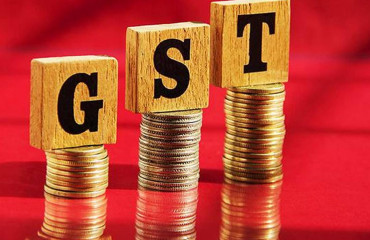
Market outlook: The imposition of a 50% tariff on Indian imports by the US from August 27 has crystallized the worst-case scenario. According to Emkay, the direct impact appears limited at ~0.5% of GDP in FY26, with negligible effect on the earnings of listed companies.
The Indian stock market is navigating a complex policy and macroeconomic environment, with fresh US tariffs coming into effect even as expectations rise around GST 2.0. In its latest strategy report, Emkay Global Financial Services' Head of Research and Strategist, Seshadri Sen, maintains a constructive stance on equities, projecting the Nifty 50 at 28,000 by September 2026, backed by consumption revival and industrial strength.
Trump Tariffs: Muted First-Order Hit, Bigger Second-Order Risks
The imposition of a 50% tariff on Indian imports by the US from August 27 has crystallized the worst-case scenario. According to Emkay, the direct impact appears limited at ~0.5% of GDP in FY26, with negligible effect on the earnings of listed companies.
However, second-order risks loom large:
i) Asset quality: Textiles and jewellery, together forming 1.2% of bank loans, may face rising stress, with small and medium enterprises also vulnerable.
ii) Employment: Nearly 300,000 low-income jobs are at stake, raising concerns about consumption slowdown at the mass-market level.
iii) External sector: A possible 1.2% current account deficit (CAD) risk, coupled with rupee weakness and sustained FPI outflows ( ₹527 billion in July – August 2025), adds to macro fragility.
Emkay expects government and RBI interventions to soften the blow, particularly for banks and vulnerable sectors.
GST 2.0: A Potential Growth Catalyst
All eyes are now on the GST Council meeting scheduled for September 4–5, where the much-anticipated GST 2.0 framework could be unveiled. News flow suggests a simplified three-tier structure (5%, 12%, 40%) with the removal of cess.
While the reform could act as a growth multiplier by boosting compliance and demand, challenges remain in convincing states, given GST's heavy weight in their revenue mix. GST formed ~23% of total revenue receipts and ~44% of own tax revenue for states in FY25.
Sen argues the reform is likely to result in fiscal expansion rather than a revenue-neutral exercise, with the 40% slab applying narrowly. Despite short-term fiscal stress, the brokerage views GST 2.0 as a major positive for medium-term growth.
Bond Market Pain May Persist
The bond market is already feeling the strain of tariffs and GST expectations. The 10-year GSec yield has risen 32 bps since June, and Emkay warns of further pressure, given FY26E nominal GDP growth at just 7.8%. The new GST structure may add 0.1% – 0.2% fiscal burden over FY26–27, while state finances remain vulnerable.
For equities, however, the brokerage sees limited spillover. Rising yields could weigh on valuations, but an earnings recovery powered by GST reforms and monetary support is expected to offset the pressure, according to Sen.
Stock Market Strategy: Consumption, Industrials in Focus
Despite near-term uncertainties, Emkay reiterates an Overweight (OW) stance on discretionary consumption and industrials. Multiple fiscal and monetary stimuli, along with GST 2.0, are expected to drive a consumption revival and cyclical recovery.
Stock Screening: GARP and Momentum Ideas
Emkay screened its coverage and consensus universe using a Growth at a Reasonable Price (GARP) lens, focusing on high EPS growth, strong RoE, healthy cash flows, and reasonable valuations.
Key GARP picks:
From consensus:CG Power and Industrial Solutions, Apollo Hospitals Enterprise, Coforge, Lemon Tree Hotels
From Emkay coverage: CG Power, Coforge, CEAT
Momentum ideas based on top FY26E EPS upgrades include Shree Cement, Muthoot Finance, Tata Chemicals, and Pfizer.
While tariffs bring immediate risks, the broader narrative for Indian equities hinges on GST 2.0 and the policy push for growth. Emkay expects these structural changes, coupled with supportive monetary policy, to trigger a durable consumption revival. With Nifty's September 2026 target set at 28,000, the brokerage underscores its confidence in India's medium-term equity story.
